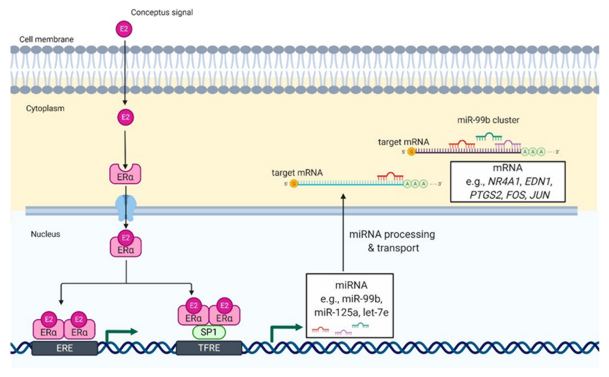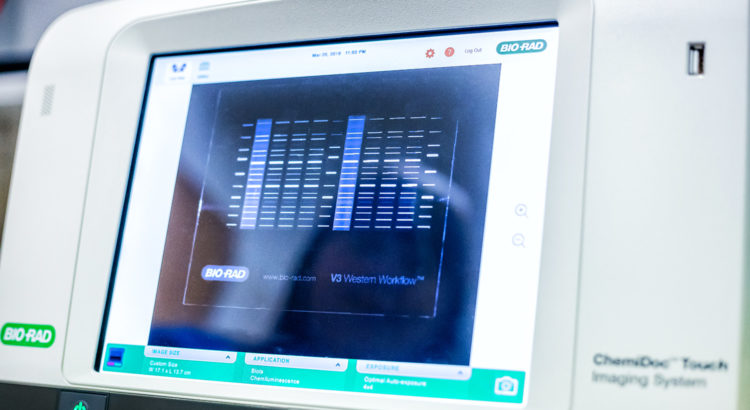FASEB Journal published the work of Prof. Monika M. Kaczmarek’s team about a novel mechanism of corpus luteum function support during pregnancy, governed by microRNAs (miRNAs).
The publication entitled „Clustered microRNAs: The molecular mechanism supporting the maintenance of luteal function during early pregnancy” authored by Emilia Przygrodzka, Gabriela Sokołowska, Kamil Myszczyński, Kamil Krawczyński and Monika M. Kaczmarek, presents a novel mechanism of corpus luteum function support during pregnancy, governed by microRNAs (miRNAs). In mature form, these small non-codding single-stranded RNAs regulate gene expression at the posttranscriptional level by binding to mRNA targets and inducing translational repression or target degradation.
The fascinating characteristic of non-coding RNAs is their wide conservation across species. A large proportion of these evolutionary conserved sequences recognize identical fragments of the same target gene in different organisms, blocking the possibility of protein synthesis and finally turning off a cellular response.
Prof. Kaczmarek’s team revealed that luteal miRNAs occur in defined clusters within genomes of several mammals and can be transcriptionally activated by the same factors/signals, affecting progesterone production by luteal cells. Sus scrofa was used as a model organism in this studies, but interspecies similarities of motifs recognized by miR‐99b/125a/let‐7e cluster were considered. Interestingly, induction of miR‐99b/125a/let‐7e cluster expression was observed during pregnancy and after treatment with porcine embryonic signal – estradiol (E2). Model of miRNA action supporting luteal function and continuous production of progesterone, both crucial for establishment and maintenance of pregnancy, was presented in a review paper published in the International Journal of Molecular Science.
 Full text of publication is available at:
Full text of publication is available at:
